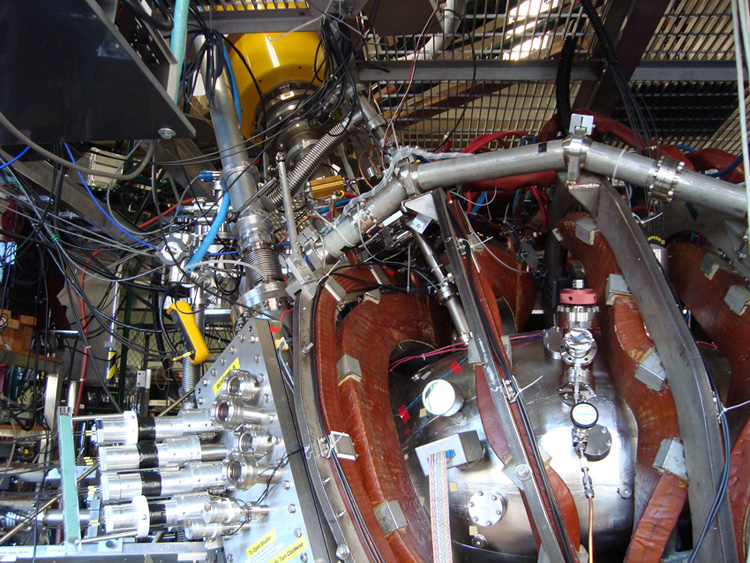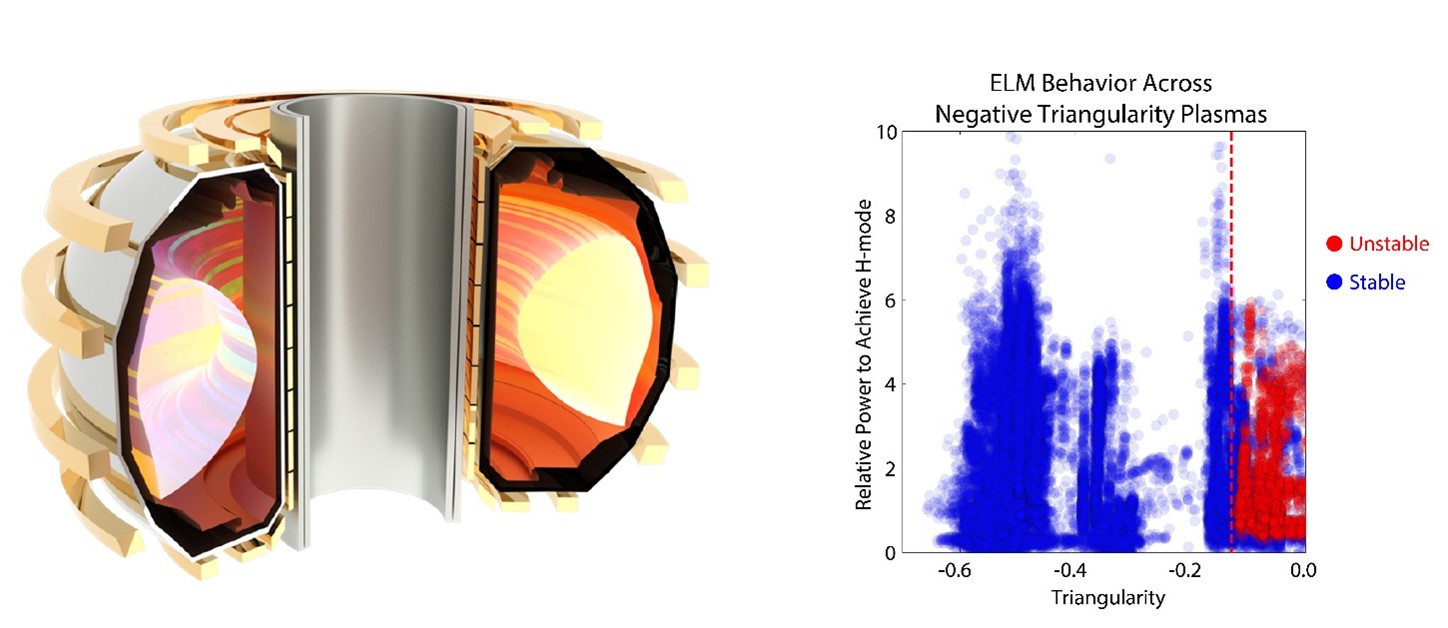Large Plasma Flow Discovered in the Helically Symmetric Experiment
A new type of stellarator could be a promising candidate for future fusion reactors.

The Science
Experimental measurements in the Helically Symmetric Experiment stellarator confirm that when the “bumpiness” in the magnetic field is reduced in the helical direction, a large plasma flow develops.
The Impact
This discovery could help control turbulence and improve plasma confinement in a stellarator, which could enhance the stellarator’s prospects as a practical fusion reactor.
Summary
The Helically Symmetric Experiment (HSX) at the University of Wisconsin-Madison is a so-called quasi-symmetric stellarator and is the only one in the world so far to be built and operated. Quasisymmetric stellarators are good candidates as a fusion reactor because they do not need to have large currents flowing within the plasma at risk of going unstable and adversely impacting the walls of the confining vessel. HSX is unique in that it has a set of complex, three-dimensional coils that were computer-designed to produce a relatively simple magnetic field, which is used to fool the ions and electrons that make up the plasma into behaving as if they were confined in a straight, twisted tube rather than the doughnut shape that actually defines the configuration. In doing so, the magnetic field is roughly constant in a helical direction, which improves the confinement and allows the plasma to flow freely. This free plasma flow is crucial to quenching turbulence in the plasma that can degrade confinement. A recent study used charge-exchange recombination spectroscopy to observe plasma flows as large at 20 km/s in the direction of symmetry, without any external input of momentum. These flows have been modeled by a new code which, for the first time, provides a tool that can be applied to any toroidal system, from ideal tokamaks, to quasisymmetric devices, to fully 3D systems.
Contact
David T. Anderson
University of Wisconsin-Madison
dtanders@wisc.edu
Funding
DOE Office of Science, Fusion Energy Sciences (FES) program
Publications
A. Briesemeister et al., "Flow Velocity Measurements Using ChERS in the HSX Stellarator," 2010. Contributions to Plasma Physics 50:741. [DOI: 10.1002/ctpp.200900057].
Related Links
http://www.sciencedaily.com/releases/2007/03/070310145550.htm
http://www.news.wisc.edu/18801
https://www.engr.wisc.edu/Dec21a.html
Highlight Categories
Program: FES
Performer: University



